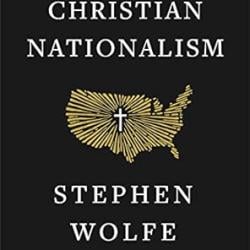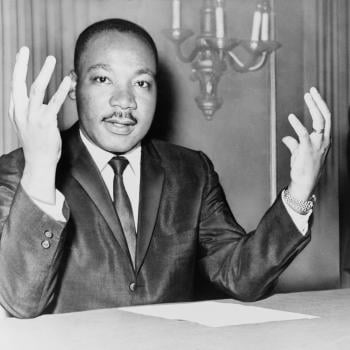I find the weekend a good opportunity to change subjects (even if only temporarily). Most of us will be attending worship services this weekend. What kind of music will we hear and sing? As a theologian I am dismayed at the turn taken in worship music (especially congregational singing) in the last two to three decades. As a professor of theology teaching mostly Christian undergraduates and seminary students I’ve noticed a very definite decline in their understanding of Christian doctrine and ability to recognize and use biblical imagery. I think the two trends are linked together.
When I was growing up in church we sang hymns and gospel songs and choruses. It was the hymns that piqued my curiosity and interest in theology and the gospel songs that kept me informed about biblical imagery. I attribute much of my youthful interest in theology to the music we sang in church. My father was a pastor and made a conscious effort to get his congregations to think about the words they were singing. He led the singing and would often stop between verses of a hymn or gospel song and comment on the message.
I recall riding home from church and asking my father about some of the phrases in the hymns and songs. “Dad, what’s an Ebenezer?” “Why did that song say we are worms?” My dad always had a ready answer. Of course, later, I filled in some of the content missing in his answers as I studied theology. But it was the songs and his answers to my questions, as much as the sermons, that stimulated my interest and informed me about our beliefs.
Many of our evangelical churches are non-creedal. That is, we do not have formal, written creeds or statements of faith that we learn in a catechism class or repeat in church. For most Pentecostals, Baptists and other Free Church evangelicals, the hymn book served as our book of beliefs; singing hymns and gospel songs was how we passed the faith (in terms of beliefs and symbols) along to the young.
I believe the cessation of singing hymns and gospel songs has greatly contributed to the general ignorance of doctrine and biblical images and symbols among evangelicals who grew up in the 1980s and since. I’ve been teaching theology, including basic doctrine, in three Christian universities for almost 30 years now and I’ve seen this general ignorance growing. I think it is at least partly attributable to the fact that my students know very few hymns and gospel songs. (I should say for the benefit of my students reading this: You’re wonderfully bright and intelligent and quick to catch on. That you didn’t grow up singing hymns isn’t your fault. My comments here are not a reflection on your intelligence!)
I take my classes to the seminary chapel and have them sing great hymns and gospel songs that relate to the doctrines we are studying. For example, I always have them sing Charles Wesley’s hymns (especially “And Can It Be?”) and sometimes I have them sing 20 or more verses. When they wince at the length of some of his hymns I say “I’d rather sing 20 verses of a Charles Wesley hymn that sing the same chorus 20 times.” Of course, they laugh at me and probably consider me an old curmudgeon and a fuddy-duddy. They would say “old school,” I suppose. I admit it.
But it’s not just because I like that music (that I make my students sing it). It’s because hymns like Charles Wesley’s and Augustus Toplady’s and even Charles Gabriel’s gospel songs convey profound truths in powerful images drawn from Scripture. Of course, there are the occasional lapses. Some songs have such bad theology I use them as illustrations of what NOT to believe. (For example, “We’ve a Story to Tell to the Nations” is a blatantly postmillennial hymn.)
I think the shift away from hymns and gospel songs to choruses in congregational singing has been much more deleterious than most people suspect. I’m not against praise and worship choruses; they have their place. (When I was growing up those places were youth group meetings and youth camp chapels.) I think blended worship is fine. But when we never sing the great hymns of the church, because we have no other means of passing the faith along to the young, we should not be surprised at the resulting drought of doctrinal knowledge and awareness of the rich images of Scripture.
Of course, not all hymns are doctrinally sound or biblically correct. As an Arminian, I despise William Cowper’s (pronounced “Cooper’s”) “God Moves in a Mysterious Way.” I would expect a Calvinist to like it. John Piper says he has it framed and hanging over the fireplace in his living room! Good for him. If I were to frame a hymn and put it over my fireplace it would be Wesley’s great hymn “And Can It Be?” (Ironically, the one time I visited Bethlehem Baptist Church in Minneapolis where Piper is pastor the congregation sang this thoroughly Arminian hymn!) I think the whole gospel is very beautifully expressed in it. And so is prevenient grace (“Long my imprisoned spirit lay, fast bound in sin and nature’s night; Thine eye diffused a quickening ray, I woke, the dungeon flamed with light. My chains fell off, my heart was free, I rose, went forth and followed Thee.”)
I urge music ministers and worship leaders to re-introduce hymn singing in churches. But don’t just have the congregation sing these great songs of the past and present (Brian Wren has written some wonderful contemporary hymns) in a perfunctory manner. Use them as teaching tools. Lead them with passion and enthusiasm and comment on the words so that people will awaken to their meaning. Too often congregations sing songs without even thinking about the words or the messages.











